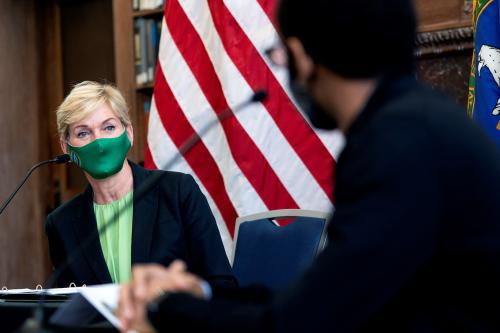Education reformers often speak about the disruptive effect that technology like online classrooms can have on the nation’s schools. Despite the intuitive appeal of virtual education programs, there is a dearth of evidence about their quality. New research on the Florida Virtual School (FLVS) from Matthew Chingos and Guido Schwerdt may offer new insight into the costs and benefits of these online classes.
FLVS Leading the Way
The FLVS was created in 1997 and is the nation’s first state-wide Internet-based public high school. Enrollment has grown rapidly since its founding; in 2013, students completed 462,000 courses. 97 percent of students are part time at the FLVS and also take classes at another school. FLVS offers a wide variety of courses including English, Mathematics, Science, and Foreign Languages. Virtual students can take these classes year round and they are free of charge for Florida residents. Each virtual class includes detailed teaching videos, supplementary activities that provide feedback to students, and assessments. Students also have ample opportunities to work with other students through chat and video conferencing. A feature that distinguishes FLVS from other online programs is the availability of teachers. 1,140 educators are available every day of the week to provide instructional support to students.
The researchers uncovered a number of important findings about the FLVS:
- Free and Easy Course Access– One of the main merits of a virtual school is removing barriers for students to take classes. The FLVS is a huge success in this sense because it makes Advanced Placement courses available to all Florida students. The authors found that about 1,300 Advanced Placement courses were taken virtually by students who attended brick and mortar schools where the classes were not available.
- Lower Costs– Per-pupil funding was about 10 percent lower for the FLVS. This doesn’t include numerous fixed costs faced by districts.
- School Attendance– Some had worried that virtual schools would encourage absenteeism. However, students who attended the FLVS part-time were not more likely to miss school.
Can Students Learn Virtually?
Opponents of virtual education have often cited concerns about the quality of the educational experience. They argue that even if virtual schools offer more course options at a lower cost, the online schools may not be helping children to learn. To investigate questions about the quality of the FLVS, Chingos and Schwerdt compared similar students who took introductory Algebra and English courses in the FLVS and in traditional Florida schools. To measure student outcomes they used results from Florida’s Comprehensive Assessment Test. When comparing the average performance of students who took the virtual courses with those who took the classes in a brick and mortar school the FLVS students performed better. However, after introducing a series of controls for past test score performance they found little or no significant differences between traditional school and the FLVS. This finding has important implications for the future of virtual schools. The study provides the first evidence suggesting that virtual schools are not significantly worse than traditional public schools. This finding should encourage other districts and states to continue experimenting with online schools.
The Brookings Institution is committed to quality, independence, and impact.
We are supported by a diverse array of funders. In line with our values and policies, each Brookings publication represents the sole views of its author(s).



Commentary
Can Students Learn Virtually? An Evaluation of the Florida Virtual School
October 13, 2014